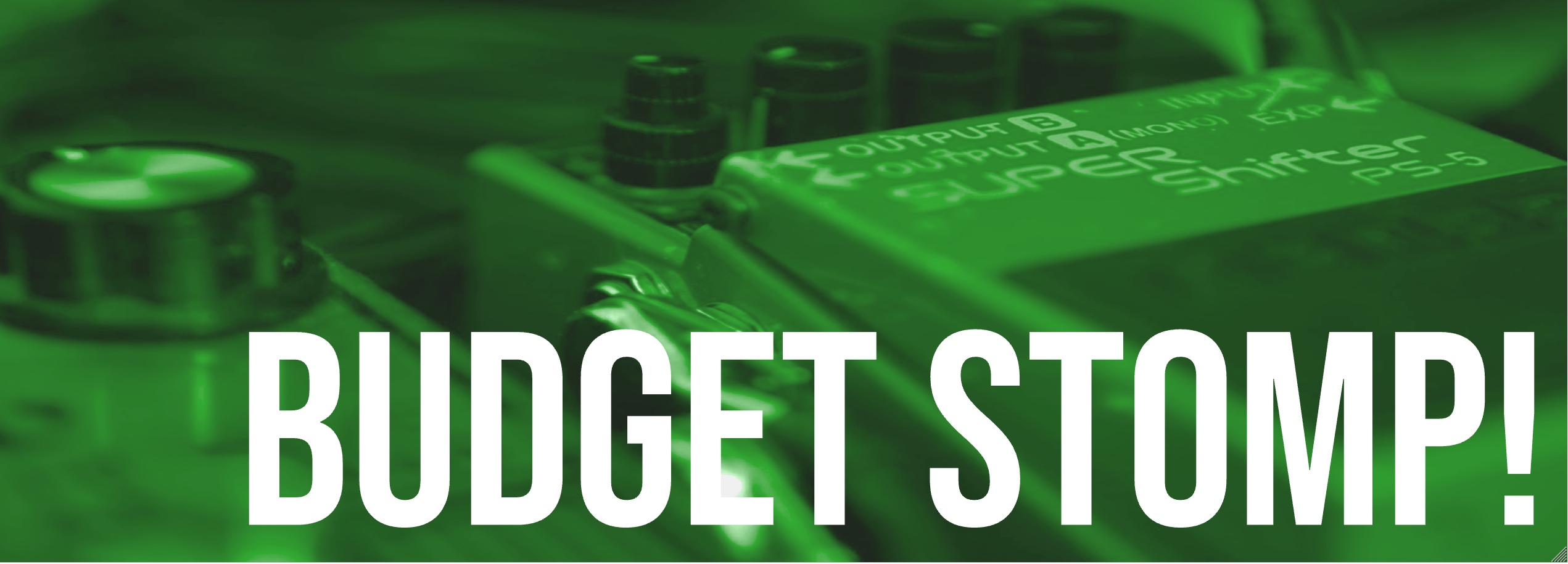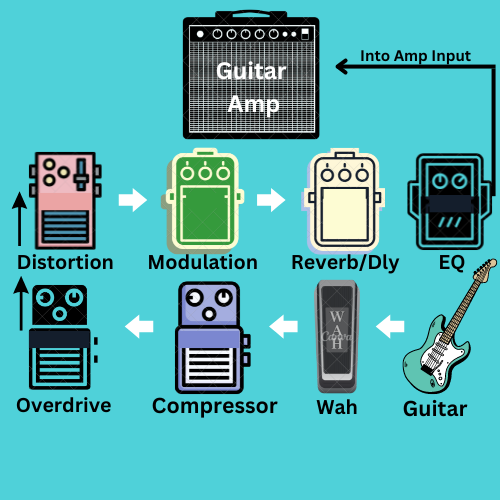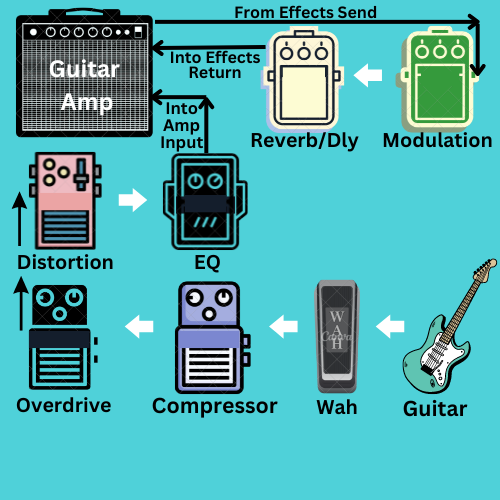
By Sid Srinivasan
Posted 08/13/2024
I’ve spent the better part of my professional career as a guitarist looking for great gear that doesn’t break the bank. I’ve never let the price tag discourage me from respecting a pedal enough to try it. Growing up in India, I had very little access to grade-A gear through my formative years, so I made do with whatever I could get my hands on. That said, my experiences have shaped my ability to create awesome guitar rigs! It’s been proven to me time and time again that it’s completely possible to sound like a million bucks on a shoestring budget. In this article, I’veput together a few of my thoughts on brands and options that could potentially get you a great bang for your buck.
The Gig
It all starts with the gig.
- What kind of music are we playing?
- Where is it happening, and is there a flight involved?
- How much space do I have on stage?
- Is this a silent stage?
- What is the load-in like? (Staircase, elevator, ramp, etc.)
These are some of the questions I ask when I sign up for a gig. It lets me know how to pack, how much or how little to bring, and what gear would best suit the gig. Over the years, I’ve gotten into the habit of creating different pedalboards depending on the gig location, type, and budget. For instance, I don’t take expensive pedals to a bar gig where beer could possibly spill on my gear. It happens! I also don’t carry a big pedalboard when I do a fly date. After you figure out what you’ll need for the gig, next you’ll have to tackle the setup.
The Setup
I’ve lost sleep over if and how my pedal board is going to efficiently cover the sonic ground that’s required of some gigs. Corporate gigs and weddings can go from requesting Frank Sinatra to Foo Fighters and everything in between. This means having multiple delays, modulations, reverbs, and at least 3 gain stages including a fuzz for when someone invariably requests Jimi Hendrix!
These are the setups that I have found work best for my purposes.
As you’ll see, in Option 1, all the pedals go into the amp input. This is the easiest and most common way that guitarists setup their rigs. Option 2 uses the amps effects loop to run all modulation and time-based effects (Reverbs, delays, echo, etc.). Option 1 uses fewer cables and works regardless of whether or not the amp has an effects loop. Although, using Option 1 often impacts the integrity of the sound,especially while running time-based effects into the preamp. Option 2 uses more cables and is restricted to amps that have an effects loop, but it helps preserve the tonal purity by allowing the effects to bypass the preamp stage.
Why’s and How’s
So now that we have seen what a setup looks like, let us dive into the why’s and how’s. I like to set up my pedal board using a 3-level system.
Level 1 – Wah + Compressor + Overdrive + Distortion/Fuzz
The first level is always about basic sounds. The clean, overdriven, crunch, and solo tones. I throw a Wah pedal in that first level just because some pedal circuits do better when they’re hit with an unadulterated guitar signal. The basic sounds form the foundation upon which all the modulation and time-based effects sit. The key here is to dial in sounds that also go well when stacked together.
Level 2 – Modulation (chorus, tremolo, phaser, etc.) + Time-Based effect (Reverb, Delay, Echo)
The second level is all about adding color to the basic sounds. The effects usually run through the effects loop of the amp. This bypasses the preamp section. From personal experience, what I have found works best is having a multi-effects unit that takes care of all modulation needs. I’ll talk about a few options later. But it helps to have 1 pedal do all the modulation effects so you don’t have 4 different pedals that do 1 thing each. I would recommend the same thing for time-based effects as well. Having a unit that can give you access to more than 1 sound at a time is a valuable tool when you’re on a dark stage in between songs with a ravenous audience waiting for you to start the next song.
Level 3 – EQ/Boost
The last level before the guitar signal goes to the preamp is an EQ and Boost. This is the final tone-shaping stage where tweaks can be made to suit the amp or the room. The boost is to be able to cut through the mix. I’ve watched so many bands play where the guitarist doesn’t have a level boost for their solo and gets drowned out by a loud band. Usually, most EQ pedals will also serve as a clean boost.
Here are a few recommendations for these specific types of pedals.
Wah
I use a Jim Dunlop 95Q Crybaby Wah. I’ve used this for years without any issues. I’ve had other Wah pedals in the past, but I kept breaking the switch. This happened twice before I decided to go with a Wah pedal that uses a spring. The 95Q retails for about $150 brand new and can be found on the used gear market for under $100.
Another option that I think is a real steal is The Wahter from Mooer. At $79 this mini Wah is perfect for anyone trying to save space on their pedalboard. It also has a pressure-sensing switch instead of a stomp-style switch.
Compressor
If you’re on a budget and want to get this right, I would look no further than the Boss CS-3. This is one of my all-time favorite compressor pedals. In addition to being a little over $100, it’s built like a tank and has a tone knob that helps shape the sound early in the pedal chain.
The other option that I highly recommend is the JHS 3 Series Compressor. Its impressive price point ($100) and quality build are its highlights. The look and feel are also no-nonsense and I’m here for it.
Overdrive
I have to preface this by saying, I’m aware that overdrives are amongst the most debated pedals. Some even have cult-like followings, like the mythical Klon Centaur. However, these options are aimed at shedding light on pedals that I’ve found to be inexpensive while still having very usable sounds.
I came across the T.C Electronics MojoMojo thanks to the incredible Paul Gilbert. It’s priced at $50 and does an amazing job of preserving the lows in your guitar signal. Most OD pedal circuits tend to suck out the lows and overdose on the mids. The MojoMojo is perfect for blues, rock, country or fusion. It goes from being a dirty boost to being usable for Clapton-esque solos and mild crunch tones.
The Boss OD-3 in my opinion is a pedal that too many of us have slept on. It’s like the Boss SD-1 (also a classic) but less Midrangey. Priced at a little over $100, this pedal is perfect for low to medium-gain crunch tones. Check the used gear listings and you might just find this gem for $70-$80.
JHS 3 Series Overdrive is a solid option. You’ll find that I bring up the JHS 3 series pedals quite a bit and with good reason. These pedals are built by artists, they care deeply about pedals, their history and their significance to guitar-driven music. Coming in at $100, this is the pedal that gets you that glassy, transparent overdrive that is trending these days.
The Digitech Bad Monkey has flown under the radar until recently. It is a tube screamer-style overdrive and iscomparable to the Klon Centaur but at a fraction of the price ($59). As ridiculous as it may be, these two pedals sound very much alike. There are YouTube videos to prove it!
Some other notable mentions to check out are Triumph from Wampler, Crayon from Electro Harmonix, and Plumes from EarthQuaker Devices. All amazing pedals at under $100.
Distortion
I’m a huge fan of the MXR Super Badass Distortion. In my opinion, it’s one of the most versatile pedals at its price point. My favorite thing about it is the 3-band EQ which can be tweaked to literally get you from 1960s classic rock to present-day metal tones with plenty of chug.
Once again, I have to mention the JHS 3 Series Distortion. Priced at $100, it’s an affordable pedal that gives you plenty of gain on tap and enough tweakability to get you from classic to modern sounds. I’m also a fan of the simple and uncomplicated design of these pedals.
The Boss DS-1 Steve McKinley Mod is a pedal of little renown. But I’m here to tell you that this is by far the best DS-1 Mod I’ve ever heard. I’ve played all the DS-1 mods on the market and this one is a clear winner. Get yourself a used stock DS-1 for $30-$40 and send it in to Steve McKinley Electronics. He does a fantastic mod on these pedals for around $80. Trust me, it’s worth it. If you love Van Halen, this plexi mod is going to make you “dance the night away”.
If the above pedals still feel out of reach, I would look no further than the Joyo American Sound. Inexpensive pedals get little respect from tone purists but companies like Joyo, Nux, and Mooer have been steadily improving their build quality and pedal design. The Joyo American Sound comes in under $50 and is a combo emulator. It can go straight into your recording interface, mixer, or frfr speaker. It’s got plenty of gain and a 3-band EQ for max tweakability. The tone knob can take you from Fender Blackface territory to a Marshall-esque crunch. It’s well worth checking out.
EQ/Boost
For as long as I’ve played live, I have used the Boss GE-7. It’s been a faithful companion and remains a secret weapon of the pros. I use this as an EQ and Boost pedal. It gives me a clean boost when used at the end of the pedal chain. This is not an absolute necessity but is a convenient way to go to 11 when solos need to cut through the mix. It’s priced at $120 but there are plenty of these puppies on the used gear market waiting to be scooped up for under $100.
Another great option is the MXR 6 band EQ. MXR makes fantastic pedals that are decently priced and get the job done – at the time of writing this, MXR 6 band EQ is $107. It takes up very little real estate on your pedalboard and you’d be surprised at how effective it is at shaping your tone.
Modulation
My approach to modulation has been about finding pedals that do multiple effects with savable presets. Keep in mind that knowing how to truly shape the sound of a particular pedal is often the only thing standing between the player and tonal bliss.
The Flamma FC05 Modulation pedal is where I would start if I were on a shoestring budget. They have a $75 offering as well as a $40 mini version of the same model. It has all the modulation effects that you’d need. Savable presets, easy recall, and switching between sounds are only on the standard-sized version. The quality of the sounds is impressive, and the pedal offers plenty of control to shape the sounds to your liking.
The Joyo Vision is another great budget-friendly option. It is priced at $105 on Amazon but is definitely on used gear listings for well below $100. It’s a dual-channel pedal that can work in series or parallel. Each switch has tap functionality and the pedal has a total of 18 sounds. Joyo has a few pedals that are worth checking out and this is definitely one of them.
A slight step up in price at $150 is the Mooer Mod Factory Pro. This too is a dual-channel modulation pedal with 16 sounds to choose from. It’s got adjustable signal chain routing and plenty of controls for advanced tone shaping. The only downside to this pedal is that it has a larger footprint for those with limited pedalboard real estate.
Delay/Reverb
The Flamma Ekoverb FS22 is a great option for a budget-friendly time-based effects solution. It has 3 pairs of built-in delay and reverb options. It also has tap tempo and a freeze function for infinite trail. The pedal offers plenty of control knobs for tone shaping and all this for $85. Definitely worth having on your pedalboard.
Next up we have The Atlantic from Nux. This little gem comes in at $150 and offers 3 different delays (60’s, 70’s, 80’s) and reverbs (spring, plate, hall). The pedal offers some fun routing options, smart tap and hold for shimmer. This one is a solid choice for anyone looking for a reverb/delay pedal. Nux has really stepped up their game in recent years.
The Keeley Caverns V2 is priced at $170. The priciest on the list so far but well worth it. Robert Keeley has been putting out top-tier stuff for decades. This pedal is very straightforward, offers fantastic sounds, and has ample tweakability. It has a couple of toggle switches that offer different textures. It’s definitely a great pedal to have on your board.
Other Options
Although there are many other options on the market right now that would rival the ones I’ve listed,, I think these are great options to start looking at if you’re on that budget-friendly train. I have personally tried the cheapest pedals on the market and can say without a doubt that there is a difference in sound when quality components are used.
Some other great options to consider would be the Sansamp Flyrigs, Mooer Red/Black Truck, Zoom MS70-CDR, and the Nux Cerberus. These are multi-effects units that have so much value packed into them in a compact offering. There is always something for everyone at different price points. Pedal companies like Wampler, Electro Harmonix, Line 6, Strymon, Eventide, Walrus Audio and EarthQuaker Devices are all putting out groundbreaking pedals that continue to shape modern music. It’s well worth checking them out when your budget allows for it.
Closing Thoughts
The pursuit of the perfect guitar tone is all part of your own journey to express yourself. It’s easy to forget that the pedal doesn’t make the music, it’s just another tool that you can use as a musician. It is human imagination and the creative spirit that gives meaning and life to all the music we create. In the past, I’ve been guilty of feeling like I need a certain pedal to play better. And I’m happy to admit that those feelings of inadequacy are not only false, but that they also make for an unacceptable environment for creativity to thrive in. Always remember that the music is in you! Good luck!


